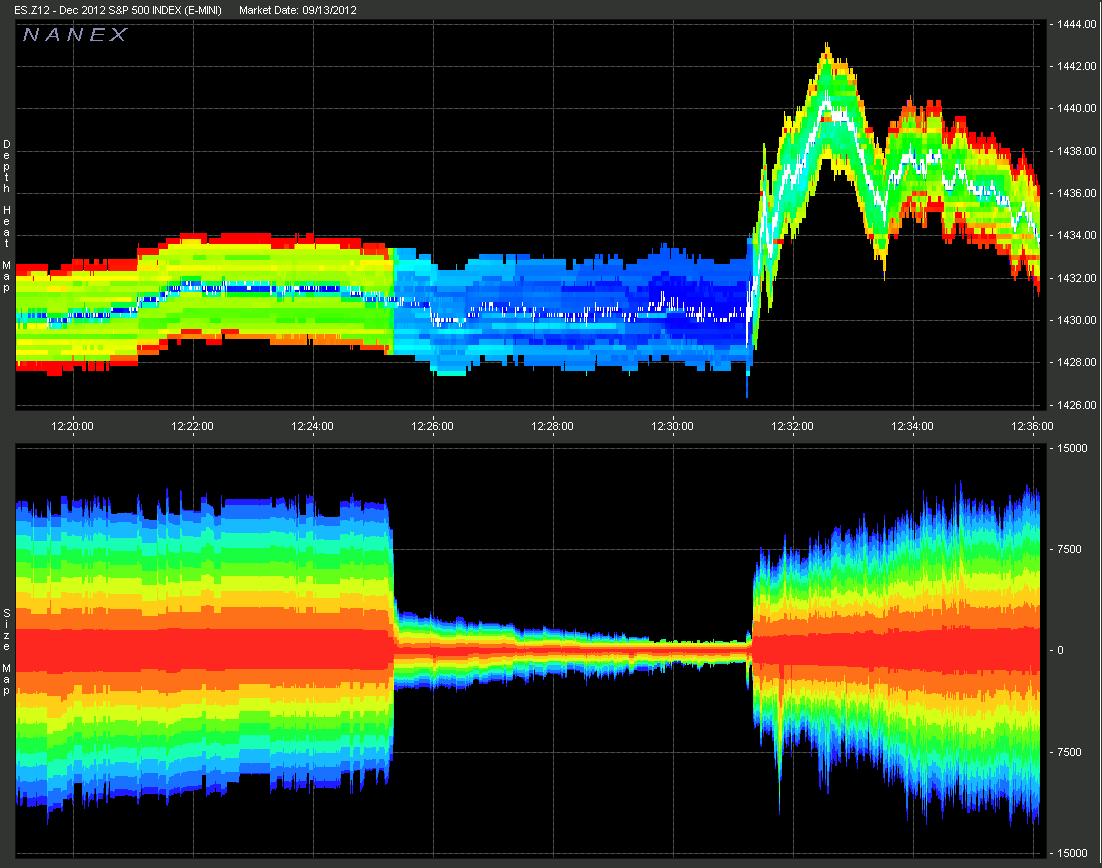I would say POPO (that's a new one - can't be find on Google as yet) has been driving the markets together with mad computers (algos and HFT)
BTW popo = printing on printing off
Thats pretty much what caused the rapid liquidity evaporation shown in the link I posted earlier.
Here is a more normal example of liquidity drying up prior to news:
More examples:
Nanex ~ 29-May-2012 ~ eMini Depth of Book
Nanex ~ 17-May-2012 ~ ES.M12 - 10:00 News/Liquidity Vacuum & Explosion
Nanex ~ 20-Jun-2012 ~ ES.U12 Heat
Nanex ~ 06-Sep-2012 ~ EMini Depth at 8:30am
***************************************************************************************************
***************************************************************************************************
Here's what happened last time helicopter Ben was about to speak:
FRB: September 12-13, 2012 FOMC Meeting
Nanex ~ 14-Sep-2012 ~ Disturbing Liquidity - source link.
I doubt anyone believes one firm controls 80% of the ES,
so what other conclusion is there, other than algo's adapting to each others
behaviour in the blink of an eye.
That why I believe this is the real root of the issue.
Yes conditions now are at least as risky now as in the 70's or 30's, maybe more so.
The above kind of behaviour would not have been seen in either of those decades though.
For anyone who thinks yeah who cares what happens a couple of mins before news.
You either don't trade then or have wide enough stops to accomadate the risk
if you are inclined to do so.
Nanex ~ 14-Sep-2012 ~ Disturbing Liquidity
There is more to that link than meets the eye.
It is just the most visible grapical representation of algo behaviour in these markets.
How many spikes do you think have occurred due to the same behaviour that go unnoticed...


